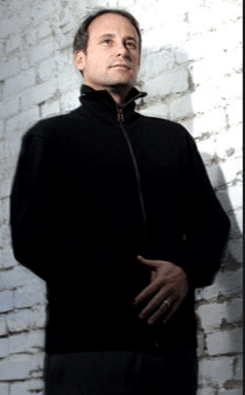Jason Lemkin’s ’20-interview’ Rule
jason lemkin’s the serial tech entrepreneur and venture capitalist who founded the world’s #1 resource for saas entrepreneurs: SaaStr.com. jason was ceo of EchoSign, and led it from $0 to $100M+ in revenues and a sale to Adobe. he’s also my co-author of “From Impossible to Inevitable“. 🙂 in this excerpt from our new book, jason outlines a key tip on building from the ground up.
The 20-Interview Rule
 The 20-interview rule is simple: Before you write a line of code, finalize your niche, or take some other kind of leap, interview 20 real potential customers. Not your friends. Not people you know.
The 20-interview rule is simple: Before you write a line of code, finalize your niche, or take some other kind of leap, interview 20 real potential customers. Not your friends. Not people you know.
They have to be real potential buyers, i.e., if you hope to sell to sales managers, you can’t interview a rep. You have to interview a VP or a Director of Sales or Sales Operations. And you have to do 20 of them. I know it’s hard to get to 20, but it’s the right number:
- You need the first 5 interviews just to truly understand the white space and the current opportunity. Yes, you probably think you already understand it. But you are the vendor, not the purchaser. You need to understand your prospective app from the purchaser’s perspective, for real.
. - You need the next 5 interviews to confirm your pattern recognition. You learn from the first five; you confirm in the next five.
. - You need interviews 11-20 to nail your pitch and hone your thesis. Once you truly understand the white-space from a buyer’s perspective, and you’ve figured out the nuances and challenges, it’s time to nail your pitch. And by doing this, you’ll also hone your thesis and strategy. That’s what interviews 11-20 are. To filter out all the ‘nice-to-haves’ from the ‘must-haves’ in your pitch. To dig in on what is really 10x better, not just 2x or 5x better.
Don’t expect all 20 to be positive. Many of my 20 interviews, in both my start-ups, were very critical. Or worse – lukewarm. Lukewarm is worse because it says, “Yeah, it’s sort of interesting, but no way I’d buy” and, implicitly, “Your idea is a huge waste of time.” I’d rather get the negative feedback.
When you’re solving business problems, not consumer problems, research matters. They don’t know how to solve it, or what you should build for them. But they do know how to express their problem. Acutely and thoughtfully. So even if the specific feedback on your product and idea is off point, the learnings on the true pain point you’re solving will be perfectly on point.
By way of example, here are two seemingly similar SaaS start-ups. Both are at about $1M in revenue. Both have happy, enthusiastic customers. Both have really great products and are organically growing. Both have great founder CEOs. But even though both are now at $1M revenue, one is just so much better-positioned for success getting quickly to $5M and $10M annual run rates. And, at least in this case, in this case study, the difference is clear: the better-positioned $1M SaaS startup knew its customers from Day One. The other one at $1M, figured it out on the fly – and, really, is still figuring it out.
They both got to the same place, at the same time, more or less, so what’s the difference? The difference is architecture. Not just software, but the whole company. The start-up that didn’t know who its core customer would be is behind on team, behind on market presence, behind on how to market and sell to its core customers, and behind on visibility at the prospect level. And the start-up that did know its target customer has a more appropriate team for those customers’ needs, and for accelerating visibility at the prospect/market level.
So if you haven’t started yet, as fun as it is to just build the wireframes and get a-codin’ without having to talk to people, do the 20 interviews. For real. Don’t skimp here. And listen. And if nothing else, force yourself to make key changes to your assumptions based on those learnings. It will pay off.
Read more – download your free chapter of “From Impossible to Inevitable”.